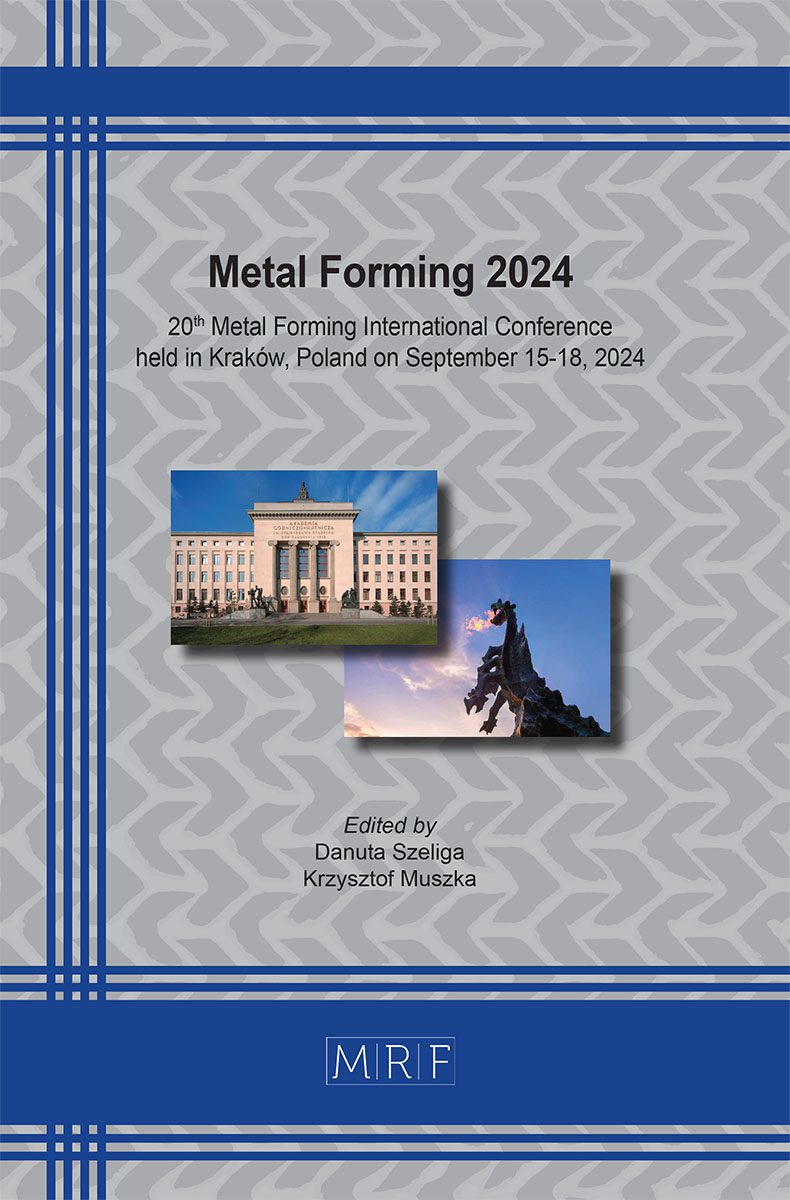–
Effect of feed pitch on formability in tube expansion using ball spin forming
OGURI Soma, KAJIKAWA Shohei, KUBOKI Takashi
download PDFAbstract. This study proposes a simple and localized forming method using a train of four balls in a tube-hoop direction that expands tube diameter at arbitrary axial positions. The balls travel in the tube direction while rotating around the tube axis. Compared with conventional methods, the expansion mechanism is compact as only one input-rotational drive forms taper and parallel sections. This paper particularly focuses on the effect of feed pitch for the parallel section forming and the ball gap to the cylinder on dimensional precision. An outer cylinder was used for securing the outer diameter as the inner surface of the cylinder can suppress the overshoot of the tube diameter. The experimental results verified the effect of the cylinder. When the ball gap to the cylinder was small enough to push the tube wall to the cylinder-inner surface, the tube diameter was stable at the target value regardless of the feed pitch for the parallel section forming. The tube thickness t decreased to 0.5 mm with increase of the clearance between the balls and the cylinder-inner surface just as designed. However, the thickness could not be less than 0.5 mm.
Keywords
Tube Forming, Expansion, Ball Spin Forming, Spinning, Aluminum
Published online 9/15/2024, 7 pages
Copyright © 2024 by the author(s)
Published under license by Materials Research Forum LLC., Millersville PA, USA
Citation: OGURI Soma, KAJIKAWA Shohei, KUBOKI Takashi, Effect of feed pitch on formability in tube expansion using ball spin forming, Materials Research Proceedings, Vol. 44, pp 656-662, 2024
DOI: https://doi.org/10.21741/9781644903254-70
The article was published as article 70 of the book Metal Forming 2024
![]() Content from this work may be used under the terms of the Creative Commons Attribution 3.0 license. Any further distribution of this work must maintain attribution to the author(s) and the title of the work, journal citation and DOI.
Content from this work may be used under the terms of the Creative Commons Attribution 3.0 license. Any further distribution of this work must maintain attribution to the author(s) and the title of the work, journal citation and DOI.
References
[1] S. Izumi, K. Kaita, H. Takeda, K. Nisawa, Effect of manufacturing condition of hot rolled steel sheet of formability of Steel Tube for Automobile, Iron and Steel 14 (1974) 2173-2184.
[2] M. Alves, B. Almeida, P. Rosa, P. Martins, End forming of thin-walled tubes, J. Mater. Process. Technol. 177 (2006), 183-187. https://dx.doi.org/10.1016/j.jmatprotec.2006.04.040
[3] T. Kuboki, M. Abe, Y. Yamada, M. Murata, Flexible rotary reduction of tube tips by dies with relief surfaces for attaining high forming limit and productivity, CIRP Annals – Manuf. Tech. 64 (2015) 269-272. https://dx.doi.org/10.1016/j.cirp.2015.04.088
[4] S. Zhang, T. Kuboki, M. Akiyama, S. Kajikawa, Effect of material on strain direction in tube expansion drawing process, Proc. 14th Int. Conf. Techn. Plast. (ICTP2023), (2023), French Riviera, France, 594-602.
[5] M. Murata, T. Kuboki, T. Murai, Compression spinning of circular magnesium tube using heated roller tool, J. Mater. Process. Tech. 162-163 (2005) 540-545. https://doi.org/10.1016/j.jmatprotec.2005.02.199
[6] W. Homberg, T. Rostek, E. Wiens, Internal Flow-Turning – An Innovative Technology for the Manufacture of Tailored Tubes, Key Eng. Mater. 639 (2015) 65-70. https://dx.doi.org/10.4028/www.scientific.net/KEM.639.65












